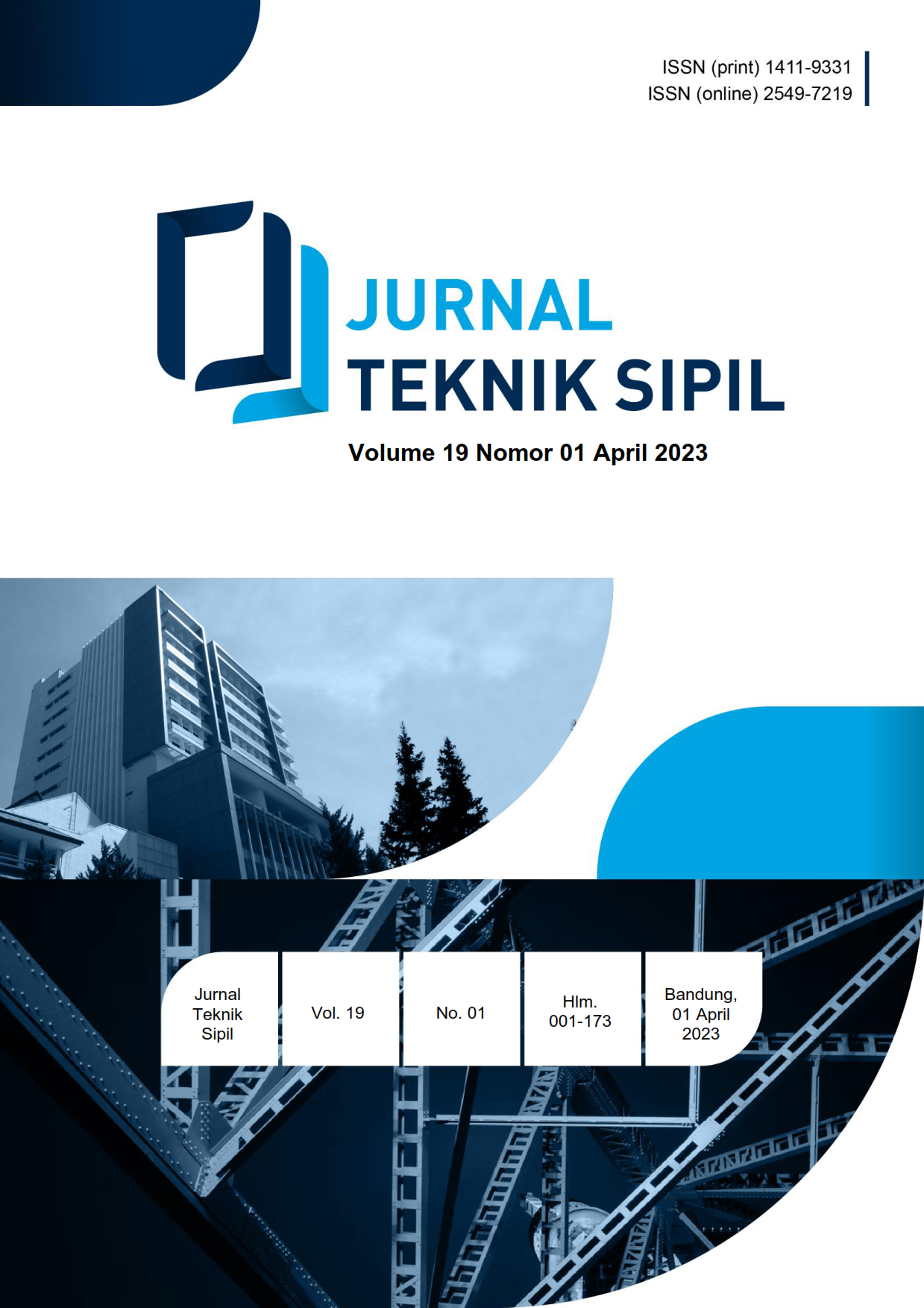Environmental Risk Management of Wadaslintang Dam
DOI:
https://doi.org/10.28932/jts.v19i1.5393Keywords:
Dam, Risk Management, Environmental RiskAbstract
This study aims to determine what environmental risk factors occur in the Wadaslintang Dam, so that assessment of these risks and risk mitigation can be done. Data collection was done by distributing questionnaires. The first stage of the questionnaire was addressed to the expert to validate the existing variables. The second stage was addressed to all dam employees to see the effect of the frequency and impact of each variable. Furthermore, data analysis was carried out, validity and reliability tests, descriptive analysis, AHP (Analytical Hierarchy Process) analysis and determination of risk factors and categories. Risk mitigation is last stage. Based on the AHP analysis, for the positive impact all variables have a high category except for V8 (forming a new ecosystem for the surrounding area) and V11 (reducing the amount of water pollutants from the river flow above the dam) which are in the medium category. As for the negative impact, all variables fall into the medium and low categories. The variables with the highest risk values for negative impacts are V16 (methane gas emissions), V25 (water evaporation due to the size of the reservoir), and V27 (changes in river morphology). Risk mitigation is carried out by maintaining ecosystems around the dam, installing filters and monitoring water quality, reducing organic material entering the dam, installing wind breakers and regulating the flow of water out of the dam.Downloads
References
Adeleke, A. Q., Bari, S., & Karim, A. (2020). Where Are We ? The Level of Risk Management in Malaysian Construction Industries Where Are We ? The Level of Risk Management in Malaysian Construction Industries. International Journal of Supply Chain Management IJSCM, 9(1), 527–535.
Adib, A., Foladfar, H., & Roozy, A. (2016). Role of construction of large dams on river morphology (case study: the Karkheh dam in Iran). Arabian Journal of Geosciences, 9(15). https://doi.org/10.1007/s12517-016-2693-2
Bahamid, R. A., & Doh, S. I. (2017). A review of risk management process in construction projects of developing countries. IOP Conference Series: Materials Science and Engineering PAPER, 271(1), 1–8. https://doi.org/10.1088/1757-899X/271/1/012042
Balai Besar Wilayah Sungai Serayu Opak, K. P. (2021). Bendungan Wadaslintang. https://sda.pu.go.id/balai/bbwsserayuopak/projects-item/bendungan-wadaslintang/
Baumgartner, L. J., & Wibowo, A. (2018). Addressing fish-passage issues at hydropower and irrigation infrastructure projects in Indonesia. Marine and Freshwater Research, 69, 1805–1813.
Boulange, J., Hanasaki, N., Yamazaki, D., & Pokhrel, Y. (2021). Role of dams in reducing global flood exposure under climate change. Nature Communications, 12(417), 1–7. https://doi.org/10.1038/s41467-020-20704-0
Ceschin, S., Tombolini, I., & Abati, S. (2015). The effect of river damming on vegetation : is it always unfavourable ? A case study from the River Tiber ( Italy ). Environmental Monitoring and Assessment, 187(301). https://doi.org/10.1007/s10661-015-4521-7
Darko, A., Ping, A., Chan, C., Ameyaw, E. E., Owusu, K., Pärn, E., Edwards, D. J., Darko, A., Ping, A., Chan, C., & Ameyaw, E. E. (2018). Review of application of analytic hierarchy process ( AHP ) in construction. International Journal Od Construction Management, 1–17. https://doi.org/10.1080/15623599.2018.1452098
Darma, B. (2021). Statistika Penelitian Menggunakan SPSS. Guepedia.
Downloads
Published
How to Cite
Issue
Section
License
Copyright (c) 2023 Alma Hastari Salsabila, Ida Ayu Ari Anggraeni

This work is licensed under a Creative Commons Attribution-NonCommercial 4.0 International License.















